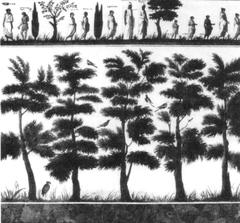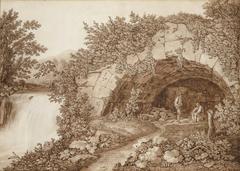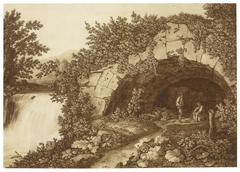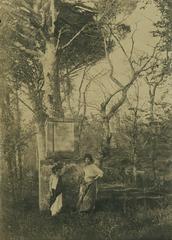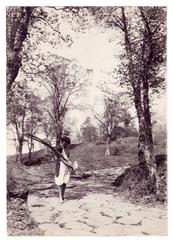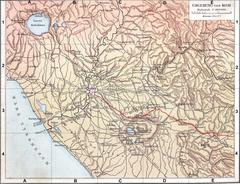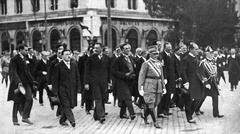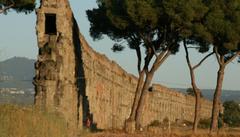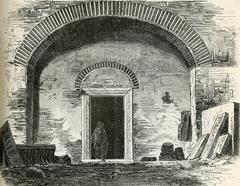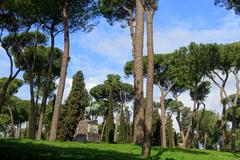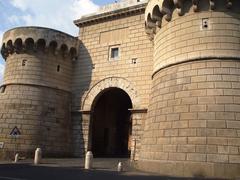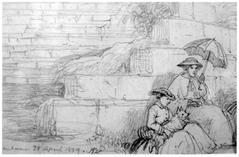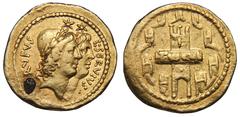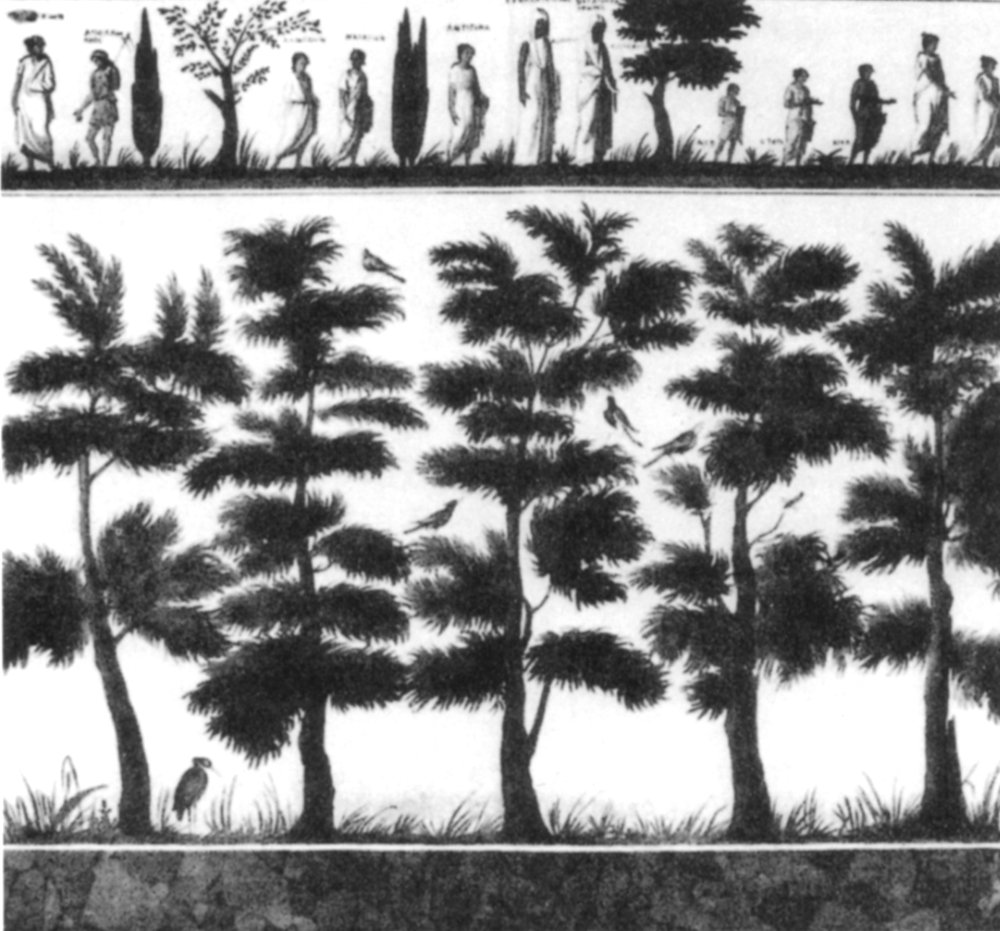
Via Latina Grottaferrata Visiting Hours, Tickets, and Travel Guide
Date: 14/06/2025
Introduction
Embark on a journey through time along the Via Latina in Grottaferrata, where ancient Roman engineering, medieval monastic heritage, and the vibrant culture of the Castelli Romani region converge. This guide provides detailed information on the history, visitor access, hours, ticketing, transportation, and must-see sites, ensuring an enriching and well-planned visit to one of Italy’s most evocative historical corridors (Wikipedia, Visit Castelli Romani, romaincampagna.it, Italia.it).
Table of Contents
- Historical Overview of the Via Latina
- Via Latina in Grottaferrata: Key Sites and Landscape
- Strategic and Cultural Significance
- Archaeological Sites and Visitor Information
- Visitor Guide: Hours, Tickets, and Tours
- Local Culture, Events, and Travel Tips
- Frequently Asked Questions (FAQ)
- Summary and Visitor Recommendations
- Sources and Further Reading
Historical Overview of the Via Latina
The Via Latina is among the oldest Roman roads, predating even the famed Via Appia. Established in the early Roman Republic, its route organically followed the landscape, connecting Rome to southern Italy through the Colli Albani hills and the fertile Valle Latina (Wikipedia). Archaeological evidence confirms its use before the foundation of the Latin colony at Cales in 334 BCE. The road was a critical military, trade, and cultural artery, influencing the development of towns like Grottaferrata (romaincampagna.it).
Via Latina in Grottaferrata: Key Sites and Landscape
Route and Setting
In Grottaferrata, the Via Latina passes west to east for about eight kilometers, from Villa Senni to Valle Latina near Castello della Molara (Osservatorio Colli Albani). The area’s landscape is characterized by rolling hills, vineyards, and olive groves—a testament to its historic agricultural importance.
Archaeological Remains
Grottaferrata’s stretch of the Via Latina is rich in archaeological features:
- Roman Villas and Cisterns: Remnants illustrate the area’s affluence and strategic role in supplying Rome.
- Funerary Monuments and Tombs: The Catacombe Ad Decimum, a communal cemetery from the early Christian era, sits alongside the ancient route (Visit Castelli Romani).
- Historic Crossroads: The Via Latina intersected with several ancient roads, underscoring Grottaferrata’s significance as a transportation hub.
Strategic and Cultural Significance
Throughout history, control of the Via Latina meant dominance over the vital Valle Latina and access to Campania. In Grottaferrata, the road’s presence spurred the construction of castles and fortifications, reflecting its military and economic value (Osservatorio Colli Albani).
The foundation of the Abbey of Santa Maria di Grottaferrata in 1004 CE further elevated the town’s status, making it a center for Byzantine-Greek religious life and scholarship (Italia.it). The abbey’s scriptorium and library preserved important manuscripts, fostering a rich intellectual tradition (Wikipedia).
Archaeological Sites and Visitor Information
Catacombe Ad Decimum
- Description: Early Christian catacombs with preserved galleries and frescoes.
- Visiting Hours: Open Sundays for guided tours. Confirm current hours via local tourism offices (Visit Castelli Romani).
- Tickets: Modest fee; supports preservation.
Abbey of Santa Maria di Grottaferrata
- Highlights: Renaissance portico, Romanesque church, Baroque frescoes, and a museum with manuscripts.
- Visiting Hours: Tuesday–Sunday, 9:00 AM–6:00 PM (last entry 5:30 PM). Closed Mondays and major religious holidays.
- Tickets: €8 for adults; discounts for students, seniors, and children. Purchase online or at the entrance.
Tusculum Archaeological Park
- Features: Roman theatre, acropolis, necropolises, and panoramic trails.
- Visiting Hours: Daily, 9:00 AM–7:00 PM (April–October); 9:00 AM–5:00 PM (November–March).
- Tickets: €7 for adults; reduced/free for EU youth and children (Parco Archeologico Culturale di Tuscolo).
Visitor Guide: Hours, Tickets, and Tours
Getting There
- By Car: Drive via Via Anagnina or the A1; parking available near main sites (percorsokm.it).
- Public Transport: Metro Line A to Anagnina, then Cotral bus to Grottaferrata. Trains to Frascati station (3 km away) connect by bus/taxi.
Accessibility
- Central sites and the abbey are wheelchair accessible, though some archaeological ruins have uneven ground.
- Confirm access details for specific sites prior to visiting.
Guided Tours
- Available at the abbey, catacombs, and Tusculum Park in Italian and English.
- Booking in advance is advised, especially during peak periods and events.
Tips for Visiting
- Wear comfortable footwear for walking and exploring uneven terrain.
- Dress modestly for religious sites.
- Carry water in summer and check weather forecasts.
Local Culture, Events, and Travel Tips
Seasonal Events
- National Fair of Handicrafts and Food and Wine: Held in spring, featuring local produce, crafts, and performances (Visit Castelli Romani).
- Religious Festivals: Byzantine liturgies and cultural events highlight the town’s unique heritage.
Dining & Shopping
- Sample Castelli Romani cuisine and wines at local trattorias.
- Artisan shops offer ceramics, olive oil, and regional delicacies.
Sustainable and Family-Friendly Travel
- Choose agriturismi and eco-friendly accommodations.
- Family activities include educational tours and nature walks in Tusculum Park.
Frequently Asked Questions (FAQ)
Q: What are the main visiting hours for Grottaferrata’s attractions?
A: Abbey: Tues–Sun, 9:00 AM–6:00 PM; Tusculum Park: daily, 9:00 AM–7:00 PM (Apr–Oct), 9:00 AM–5:00 PM (Nov–Mar); Catacombs: Sundays, guided only.
Q: How much do tickets cost?
A: Abbey: €8 adults, discounts available. Tusculum: €7 adults, reduced/free for youth/children. Catacombs: modest fee.
Q: Are sites accessible for wheelchair users?
A: The abbey and town center are accessible. Some archaeological sites have limited access—check in advance.
Q: How do I get there from Rome?
A: By car via Via Anagnina/A1; Metro A + Cotral bus; or train to Frascati + bus/taxi.
Q: When is the best time to visit?
A: Spring and autumn offer mild weather, fewer crowds, and coincide with cultural events.
Q: Are guided tours necessary?
A: Not required but highly recommended to gain historical context and access restricted areas.
Summary and Visitor Recommendations
The Via Latina in Grottaferrata is a living testament to Italy’s layered history—Roman engineering, medieval spirituality, and vibrant contemporary culture. Highlights include the Catacombe Ad Decimum, the Abbey of Santa Maria di Grottaferrata, and panoramic Tusculum Park. Visitors can enjoy culinary delights, scenic landscapes, and immersive events, all within easy reach of Rome.
To maximize your experience:
- Download the Audiala app for maps, itineraries, and real-time updates (Audiala).
- Check official websites for current hours and ticketing.
- Respect site preservation guidelines.
- Explore local markets and cultural festivals for deeper engagement.
Sources and Further Reading
- Wikipedia: Via Latina
- Osservatorio Colli Albani
- Visit Castelli Romani – Catacombe Ad Decimum
- romaincampagna.it – La Via Latina
- percorsokm.it – Percorso da Latina a Grottaferrata
- Italia.it – Grottaferrata
- Parco Archeologico Culturale di Tuscolo
- Audiala App – Grottaferrata
For additional planning resources, visit the official tourism websites and consider interactive maps and virtual tours to enrich your visit.
